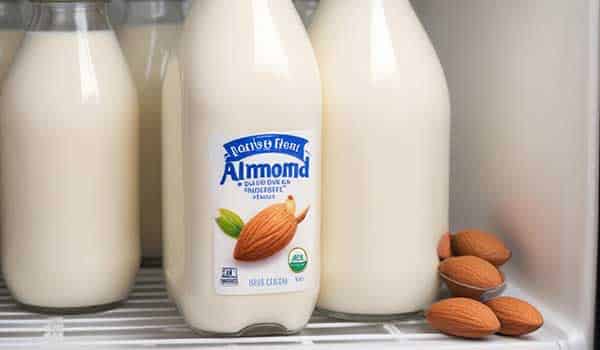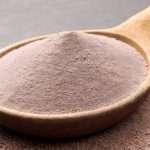As an avid home chef and health-conscious consumer, I’ve always been intrigued by the versatility of almond milk. This dairy-free alternative has become a staple in my kitchen, offering a creamy texture and a subtle nutty flavor that complements a wide range of recipes. However, one question that has often crossed my mind is whether it’s possible to freeze almond milk without compromising its quality.
In this comprehensive guide, I’ll delve into the ins and outs of freezing almond milk, sharing my insights and practical tips to help you make the most of this versatile ingredient.
Understanding the Composition of Almond Milk
Almond milk is a plant-based milk made by blending almonds with water. Unlike cow’s milk, which is a complex emulsion of fats, proteins, and carbohydrates, almond milk is primarily composed of water, with a smaller percentage of almond solids, including proteins, fats, and carbohydrates. This unique composition can have a significant impact on how almond milk behaves during the freezing and thawing process.
Factors to Consider Before Freezing Almond Milk
Before we dive into the freezing process, it’s essential to understand the potential challenges and factors that can influence the quality of almond milk after freezing. Some key considerations include:
- Separation: Almond milk is a delicate emulsion, and the freezing process can cause the almond solids and water to separate, leading to a grainy or unappetizing texture upon thawing.
- Texture and Mouthfeel: Freezing can also affect the creamy, smooth texture that we expect from almond milk, potentially resulting in a thicker, chunkier, or even icy consistency.
- Flavor Alterations: Depending on the specific brand or homemade recipe, the freezing process may impact the subtle nutty flavor of almond milk, causing it to become more muted or even develop off-flavors.
- Nutrient Degradation: While the overall nutritional profile of almond milk is generally well-preserved during freezing, some sensitive nutrients, such as certain vitamins and enzymes, may be affected by the freezing and thawing process.
The Freezing Process and Its Impact on Almond Milk Quality
Freezing almond milk can be a delicate process, and understanding the science behind it can help you achieve the best possible results. When almond milk is frozen, the water content within the milk expands, forming ice crystals. This expansion can disrupt the emulsion, leading to the separation of the almond solids and the water.
To mitigate these challenges, it’s essential to follow a specific freezing protocol:
- Preparation: Before freezing, give your almond milk a good shake or stir to ensure the ingredients are well-combined. This can help prevent premature separation during the freezing process.
- Packaging: Choose the right container for freezing, such as airtight freezer-safe bags or containers. Avoid using thin plastic or glass containers, as they can be prone to cracking or shattering during the freezing process.
- Freezing Technique: Freeze the almond milk in small, manageable portions, such as in ice cube trays or muffin tins. This will allow for quicker and more even freezing, reducing the risk of large ice crystals forming.
- Freeze Time: Aim to freeze the almond milk as quickly as possible, ideally at a temperature of 0°F (-18°C) or lower. Slower freezing can lead to the formation of larger ice crystals, which can negatively impact the texture and mouthfeel.
Tips for Freezing Almond Milk Effectively
To ensure the best possible outcome when freezing almond milk, consider the following tips:
- Shake or Stir Before Freezing: This helps prevent separation and maintain a consistent texture.
- Use Ice Cube Trays: Freezing the milk in ice cube trays allows for easy portioning and faster thawing.
- Add Stabilizers: Incorporating a small amount of guar gum or xanthan gum can help prevent separation during the freezing and thawing process.
- Minimize Exposure to Air: Ensure the container is airtight to prevent freezer burn and maintain freshness.
- Label and Date: Clearly label the container with the contents and the date to keep track of the milk’s freshness.
Common Misconceptions about Freezing Almond Milk
There are a few common misconceptions about freezing almond milk that are worth addressing:
- Almond Milk Can’t Be Frozen: While the freezing process can impact the milk’s texture and consistency, it is entirely possible to freeze almond milk with the right techniques.
- Frozen Almond Milk Is Unsafe: Properly frozen and thawed almond milk is just as safe to consume as fresh almond milk, as long as it is stored and handled correctly.
- Frozen Almond Milk Loses Nutritional Value: While some minor nutrient loss may occur during the freezing and thawing process, the overall nutritional profile of almond milk remains largely intact.
Creative Uses for Frozen Almond Milk
Frozen almond milk can be more than just a beverage – it can be a versatile ingredient in a variety of recipes. Here are a few ideas to get you started:
- Smoothies and Shakes: Use frozen almond milk cubes to create thick, creamy smoothies and shakes.
- Baking and Cooking: Incorporate frozen almond milk into baked goods, sauces, and other dishes for a dairy-free twist.
- Ice Cream and Popsicles: Blend frozen almond milk with your favorite flavorings to make homemade, dairy-free ice cream or popsicles.
Alternatives to Freezing Almond Milk
If you’re not keen on freezing almond milk, there are a few alternative options to consider:
- Purchasing Smaller Containers: Buy almond milk in smaller quantities to minimize waste and ensure freshness.
- Powdered Almond Milk: Opt for powdered almond milk, which can be reconstituted as needed and has a longer shelf life.
- Making Smaller Batches: If you’re making your own almond milk, consider preparing smaller quantities to avoid having excess that needs to be frozen or discarded.
Conclusion
Freezing almond milk can be a practical and effective way to extend its shelf life and reduce food waste. By understanding the composition of almond milk, following the right freezing and thawing techniques, and exploring creative uses for frozen almond milk, you can unlock the secret to enjoying this dairy-free beverage without compromising its quality.
If you’re ready to start freezing your almond milk, be sure to check out our comprehensive guide for step-by-step instructions and expert tips. Don’t let a single drop of this nutritious and versatile milk go to waste – get started today!



